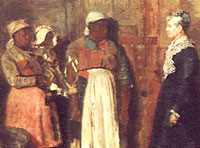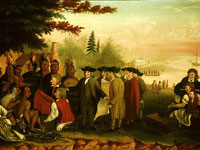Presidio of San Francisco [CA]
The Presidio of San Francisco has served as a barracks for 218 years, and has been occupied by three countries. Now, visitors can enjoy the stunning architecture of the Presidio, as well as see the historic airfields and national cemetery also located in the park. In addition to the impressive history and culture of the Presidio, the park also serves as a haven for endangered species and features beautiful and expansive views of the Golden Gate Bridge, the city of San Francisco, and Marin County.
The site offers historic information about the Presidio, visitor information, a photo-gallery containing 92 photographs of the Presidio and its surrounding grounds, and resources for educators, including an interactive field trip planner and educational online games for students.

